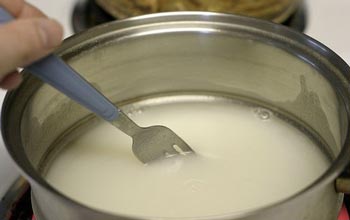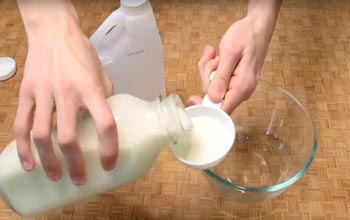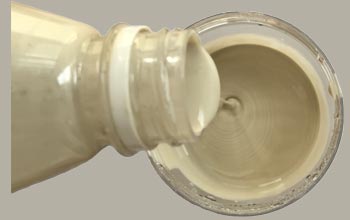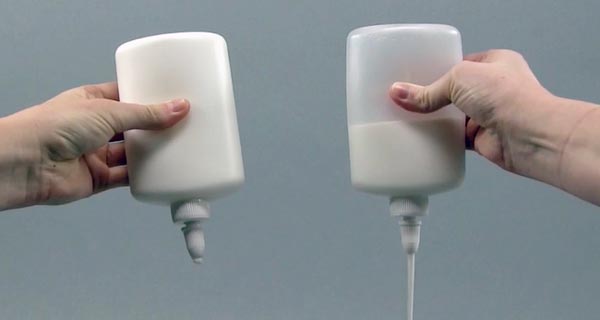The Composition of Glue – These Facts Will Surprise You!
Glue is a magical substance having the capability of joining two surfaces together. The adhesive bond that forms in between the two surfaces by a proper glue is hard to break.
At least once in our lives have we got to experience the remarkable results of glue, haven’t we? We use glue for putting our shoe soles back into place, sticking a postage stamp, or crafting items for loved ones.
Even the adhesive tapes we use for packaging items or sticking posters to the wall contain glue. It is indeed a crucial substance for every household!
Speaking of the never-ending benefits glue brings to the table, has it ever sparked your interest regarding the composition of glue?
Keep reading, and you’ll find the answer shortly!
Table of Contents
What Is Glue Made Of?
The first known use of glue dates back to 200,000 years ago when our Neanderthal ancestors in France wanted to protect their cave paintings from the effects of moisture present on the cave walls. In order to add longevity to their masterpieces, they mixed paint with glue made from the tar of birch bark.
Another example of glue usage dates back to 6,000 years ago. While excavating the burial sites of ancient tribes, archeologists discovered that the broken pieces of clay pots, which contained food, were bound together with tree resins.
Plants were not the only source for the manufacturing of adhesives. People in Babylon would use animal blood and protein for building their homes and temples. It is known that these ingredients had been used by people all around the world for at least 7,000 years!
Horses were the animals traditionally used for many years in the manufacturing of glue. That’s because they are large, and they have plenty of collagen, a protein found in connective tissues, bones, and skin. The protein can be made into gelatin, which remains sticky while wet and hardens when it dries.
Since horses are no longer prevalent in transportation and agriculture, the bones and hides of pigs and cattle are used for making glue.
Other organic ingredients used in the manufacturing of glue include fish, starch, soybean, casein, rubber, and asphalt.
Although organic glues provide the tackiness needed for binding books, bonding rubber gasket to steel, or veneering, synthetic glues are also used. These glues are made from a variety of substances, including polyvinyl acetate, neoprene, and phenol.
Elmer’s Glue Ingredients
If you have Elmer’s Glue-All in the house, you’re probably now thinking that the bull logo it uses refers to the fact that the glue is made of bull parts.
However, that’s not the case! At the beginning of its time in 1947, Elmer’s glue was made from casein, a protein derived from cow’s milk and labeled as Cascorez glue.
Afterward, synthetics materials are used in the manufacturing process, and the same ingredients are used in Elmer’s Glue-All and Elmer’s School Glue.
As for the logo, Elmer the bull was used only for marketing purposes!
How Is Glue Made?
Animal-made glues are made from animal remains, such as hooves, bones, and skin. These parts body parts are first washed to remove dirt and then soaked in water.
Soaking causes the parts to become soft and release collagen. In order to speed up the process of releasing collagen, they are treated with lime and acid.
The acid is later removed and the stock is cooked over a flame until it turns into a thick substance. The substance is then purified with hydrochloric acid and other chemicals to be ready for use as glue.
Synthetic glues, on the other hand, are made from chemicals. The manufacturing process involves the isolation of chemical compounds through chemical reactions.
First, vinyl acetate is made by reacting acetylene with oxygen and acetic acid. Palladium catalyst is used in the reaction process. As a result, a polymer is created.
This polymer, known as polyvinyl acetate, is then mixed into an emulsion until glue of the appropriate texture is formed.
How To Make Your Own Glue?
It is possible to make your own homemade glue using simple ingredients. Here are some of the methods you can follow if you run out of glue.
Method 1: Flour Glue

1. Pour 1/2 cup of flour into a bowl and add water sufficient enough to make the batter gooey.
2. Mix the batter well until it is smooth.
3. Transfer the batter into a saucepan and put it on medium heat.
4. Using a spoon, stir the batter constantly as it boils.
5. Turn off the stove and let the batter cool down.
6. Once the batter is cooled, it will become thick. Store it in an airtight container.
Method 2: Milk Glue

1. Add 2 tablespoons of powdered milk in a bowl and mix it with 1/4 cup hot water. If you don’t have powdered milk, you can start with only 1/4 cup warm milk instead.
2. Add a tablespoon of vinegar and stir the mixture. After some time, the milk will turn into curds and whey. Keep stirring until it is fully formed.
3. Using a paper towel, filter out the whey and keep the curd.
4. Put the curd into a bowl. Add 1/8 teaspoon of baking soda and a teaspoon of hot water. There will be foams and bubbles.
5. If the mixture has lumps, add a small amount of baking soda. If it’s very thick, add more water. It needs to be at the right consistency to be used as glue.
6. Once the glue has reached the right consistency, place it in an airtight container. You can refrigerate it so that it lasts longer than a week.
Method 3: Corn Syrup And Corn Starch Glue

1. Add 3/4 cup water, 2 tablespoons corn syrup, and a teaspoon of vinegar to a saucepan.
2. Stir the mixture and bring it to a boil.
3. Take a cup and add 2 tablespoons of corn starch and 3/4 cup cold water. Stir the ingredients to make a smooth mixture.
4. Slowly pour the mixture into the saucepan. Let the mixture come to a boil again. Keep cooking for a minute.
5. Turn off the stove and let the mixture cool down. Store the glue in an airtight container.
Final Words
As you’ve seen, people came up with ways over the centuries to make two objects stick together. It’s all thanks to them that today we are now able to use glue whenever we need!
Hopefully knowing the composition of glue has helped quench your curiosity. Now you won’t just see the results, but know what were the catalysts behind that result.
Also Read:

